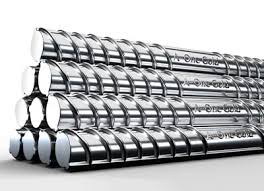steel price In an increasingly interconnected world, the pricing of steel—a fundamental material in construction, manufacturing, and infrastructure development—is profoundly influenced by a myriad of global events. Understanding these dynamics is crucial for stakeholders across various sectors, including manufacturers, investors, and policymakers. This article delves into the complex relationship between global events and steel pricing, exploring key factors that contribute to fluctuations and offering insights into future trends.
Geopolitical Tensions
One of the most significant drivers of steel prices is geopolitical instability. Conflicts and tensions between nations can lead to uncertainty in supply chains, which directly impacts pricing. For instance, when major steel-producing countries face sanctions or trade restrictions, the global supply of steel can be severely disrupted. This was evident during the U.S.-China trade war, where tariffs on steel imports led to increased prices domestically while also affecting global markets. Buyers often find themselves scrambling for alternative sources, driving up demand and consequently prices.
Economic Shifts
Economic conditions play a pivotal role in determining steel prices. In periods of economic growth, demand for steel typically rises as construction and manufacturing activities ramp up. Conversely, during economic downturns, demand can plummet, leading to price decreases. The COVID-19 pandemic serves as a prime example; initially, steel prices dropped sharply due to halted construction projects and reduced manufacturing activity. However, as economies began to recover, a surge in demand—coupled with supply chain disruptions—resulted in skyrocketing prices. Monitoring economic indicators such as GDP growth, industrial production rates, and construction activity can provide valuable insights into potential shifts in steel pricing.
Supply Chain Disruptions
Supply chain issues have become increasingly prominent in recent years, affecting steel prices significantly. Events such as natural disasters, pandemics, and logistical challenges can create bottlenecks in production and distribution. For example, hurricanes or earthquakes can damage steel mills or transportation infrastructure, leading to shortages. Additionally, the pandemic highlighted vulnerabilities in global supply chains, with port closures and shipping delays causing considerable price volatility. Companies must consider these factors in their supply chain strategies, as even minor disruptions can lead to significant price increases.
Environmental Policies
As the world increasingly prioritizes sustainability, environmental policies are becoming a critical factor in steel pricing. Regulatory measures aimed at reducing carbon emissions have significant implications for the steel industry, which is traditionally a high-emission sector. Countries are investing in greener technologies, which often require substantial capital. While this transition is essential for sustainability, it can lead to short-term price increases as producers adjust to new regulations and invest in cleaner processes. Understanding the regulatory landscape and its potential impact on production costs is crucial for stakeholders looking to navigate the evolving steel market.
Technological Advancements
Technological advancements are also influencing steel pricing. Innovations in production techniques, such as electric arc furnace technology, are making steel production more efficient and environmentally friendly. However, the initial investment in new technologies can lead to increased costs, affecting steel prices in the short term. Over time, these advancements may lead to greater efficiencies and lower prices, but the transition period can be marked by volatility.
Global Demand Trends
The global demand for steel is shaped by various factors, including population growth, urbanization, and infrastructure development. Emerging economies, particularly in Asia and Africa, are driving significant demand as they invest in infrastructure to support growing populations. Conversely, developed nations may experience slower growth in steel demand as they reach saturation in infrastructure projects. Analyzing global demographic trends and urbanization rates can provide valuable context for understanding future demand patterns and their potential impact on steel prices.
Conclusion
In conclusion, the pricing of steel is intricately tied to a wide array of global events, from geopolitical tensions to economic shifts and environmental policies. Stakeholders in the steel market must remain vigilant and informed about these factors to anticipate price movements and make strategic decisions. By understanding the complex interplay between these elements, businesses can better position themselves to navigate the challenges of the steel industry and capitalize on emerging opportunities. As we move forward, staying attuned to global developments will be essential for anyone involved in the steel market, ensuring resilience and adaptability in a rapidly changing landscape.
